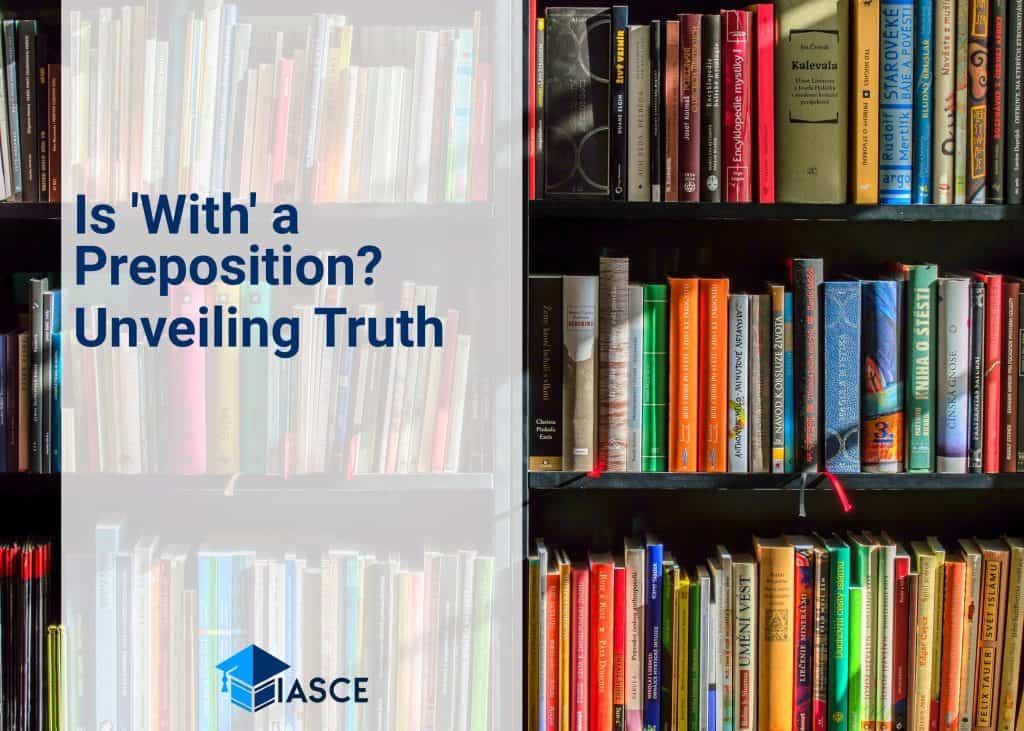Is ‘with’ a preposition in English? Yes, it is. It’s one of those small but mighty words that plays an integral role in our language structure. We use it to link nouns, pronouns, and phrases together, creating coherent sentences that make sense.
But there’s more to the story than just labeling ‘with’ as a preposition. In fact, digging deeper into its usage can reveal fascinating insights about the flexibility and complexity of English grammar rules.
So buckle up for an enlightening journey – we’re about to unveil the truth behind ‘with’, exploring its functions and roles within sentences and shedding light on common misconceptions.
Understanding Prepositions in English
Let’s delve into the world of prepositions. As an integral part of English grammar, they connect and relate words in a sentence, providing context such as direction, location, or time. For example, consider ‘under’, ‘over’, ‘through’; these all indicate a relationship between different elements within the sentence.
But wait! There’s more to it than that. Prepositions are often seen before noun phrases or pronouns to form prepositional phrases like “on the table” or “with me”. These phrases can function as adjectives or adverbs. Now isn’t that something?
I bet you’re wondering where does our friend ‘with’ fit into this scenario? Well, ‘with’ is indeed a preposition. It typically indicates association, connection, or inclusion.
For instance:
-
I’m going to the park with my friends.
-
He completes his homework with diligence.
-
She prefers her coffee with cream and sugar.
Each use case above demonstrates how ‘with’ connects different parts of a sentence together – an essential characteristic of prepositions.
However, remember not to confuse it with conjunctions which also connect words but work differently. Conjunctions like ‘and’, ‘but’, and ‘or’ link equal parts whereas prepositions link related parts only – another distinction that sets apart our buddy ‘with’ as a bonafide preposition.
Ultimately, no matter how complex English grammar may seem at first glance, understanding its basics like what constitutes a preposition can make things much clearer for us. So keep exploring and learning because every nugget of knowledge counts!
Exploring ‘With’ as a Preposition
Diving into the world of English grammar, we’re often faced with intricacies that may seem confusing at first glance. One such instance is understanding whether “with” functions as a preposition. Well, let’s untangle this linguistic knot together.
Traditionally, ‘with’ is indeed classified as a preposition in English. It serves to connect two or more entities and shows relationships between them. Much like other prepositions such as ‘on’, ‘in’, and ‘at’, it helps establish context within sentences.
To further illustrate this point, I’ve put together a simple table with examples:
|
Sentence |
Explanation |
|---|---|
|
I’m going to the park with my friend. |
Here, ‘with’ connects the speaker (I) to another entity (my friend). |
|
He baked cookies with chocolate chips. |
In this sentence, ‘with’ links the action of baking cookies to an additional detail (chocolate chips). |
But wait! There’s more fascinating stuff about our friend “with”. While it primarily acts as a preposition, it can also take on other roles in different contexts – such as forming phrasal verbs or compound words.
Take these examples:
-
Stand with = Support
-
Do away with = Eliminate
-
Hand-in-hand with = Together
Isn’t language fun? Now you might think twice before labeling “with” merely as a preposition!
Conclusion: Unveiling the Truth About ‘With’
After a deep dive into the world of English grammar, we’re ready to unpack the truth about ‘with’. Yes, it’s true. As you might have suspected, ‘with’ is indeed a preposition in English. But like many aspects of this ever-evolving language, its usage has layers that are worth exploring.
Let’s take a moment to reflect on what we’ve learned:
-
The word ‘with’ typically acts as a preposition in sentences. It helps establish relationships between different parts of a sentence.
-
There’s complexity within this seemingly simple word. In Old English, there were two distinct words that evolved into our modern-day ‘with’: one indicated opposition or distinction; the other suggested accompaniment or union.
Incorporating these historical nuances can enrich your understanding (and appreciation) for this often-overlooked component of our language.
Now let me share some examples to illustrate how versatile and crucially important ‘with’ truly is:
|
Usage |
Example Sentence |
|---|---|
|
To indicate companionship or association |
I went shopping with my friends. |
|
To show instrumentality or means |
I painted the canvas with watercolors. |
|
To describe manner |
He spoke with confidence. |
|
To denote conflict or contention |
He argued with his boss over pay. |
As you can see from these examples, while ‘with’ predominantly functions as a preposition, its role extends beyond just linking words together—it adds depth and context to our expressions.
So there you have it! We’ve not only confirmed that ‘with’ is indeed a preposition but also touched on its history and seen its myriad uses in action. Next time you pen down an email or craft a speech, remember: even small words like ‘with’ carry weight in their own right!
And if anyone ever questions whether “With” is a preposition – well now you know what to tell them!

